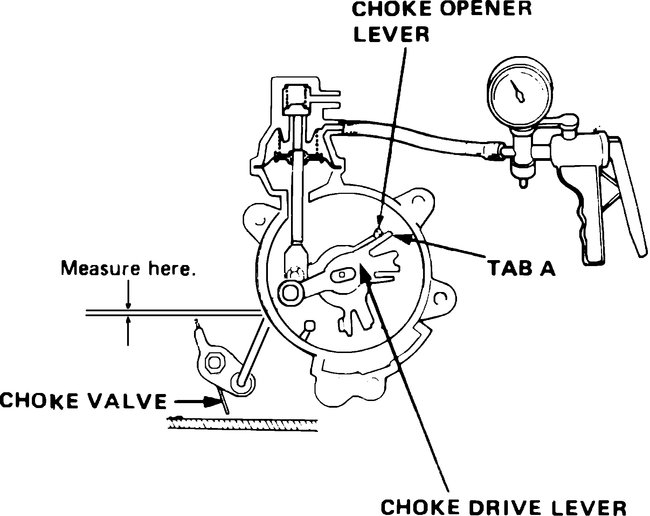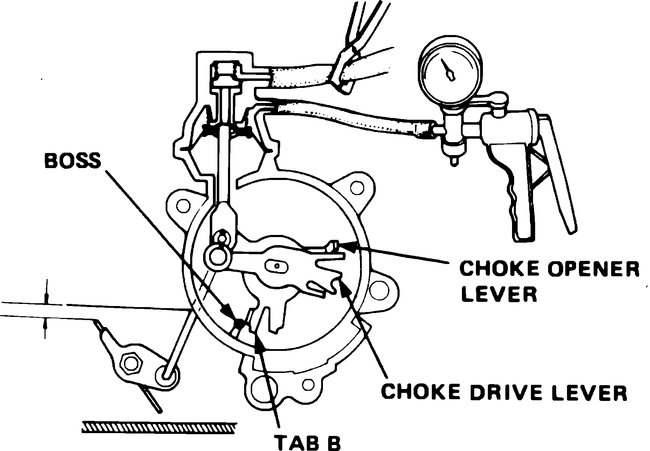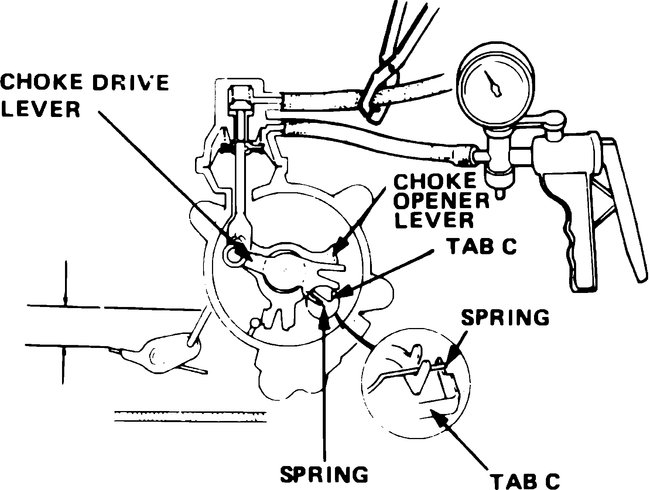Hi and thanks for using 2CarPros.
Your vehicle has a carburetor with a vacuum and thermo choke assembly. Now, based on what you are telling me, it sounds like the choke is not staying closed enough when the engine is cold. That can be the result of a vacuum issue, an engine vacuum issue, or the linkage on it is blocked or needs adjusted.
Here are the directions for checking and adjusting. You will need a general vacuum pump which most parts stores will lend or rent to you. Follow the directions to make sure things are working correctly, there are no vacuum leaks, the choke is closing and opening correctly based on temperature, and the linkage isn't being blocked by something.
_________________________________
STANDARD PROCEDURE
Fig. 9 Choke linkage adjustment, first stage. See picture 1
1. Remove air cleaner and choke coil
2. Disconnect upper choke opener hose from thermo valve and leave open to atmosphere, and disconnect lower hose and connect suitable vacuum pump to thermo valve.
3. Apply at least 8 inches Hg vacuum to thermovalve. If vacuum drops below 8 inches Hg, vacuum pressure has opened bleed valve. Slowly reapply vacuum until highest vacuum reading can be maintained; this will bring opener rod as close as possible to bleed valve without opening valve.
4. Rotate choke drive lever counterclockwise until it contacts choke opener lever, then measure choke valve clearance, Fig. 9.
5. If 1st stage clearance is not.119-.125 inch for manual transmission models or.091-.097 inch for automatic transmission models, adjust by bending tab A, Fig. 9.
Fig. 10 Choke linkage adjustment, second stage. See picture 2
6. Plug upper port on thermo valve, pull choke opener rod to the fully extended position by applying 6-7 inches Hg vacuum to lower port, Fig. 10, rotate choke drive lever counterclockwise until it seats against choke opener lever, then measure choke valve clearance.
7. If 2nd stage clearance is not.200-.208 inch, adjust by bending tab B, Fig. 10.
Fig. 11 Choke linkage adjustment, third stage. See picture 3
8. Continue holding opener lever against tab, rotate choke drive lever until tab C contacts spring, then measure choke clearance, Fig. 11.
9. If 3rd stage clearance is not.394-.412 inch, adjust by bending tab C, Fig. 11.
10. Reinstall choke cover and adjust as outlined.
____________________________________
Let me know if this helps. Also, if you have questions or need help, let me know.
Take care,
Joe
Images (Click to make bigger)
Sunday, November 25th, 2018 AT 8:07 PM







